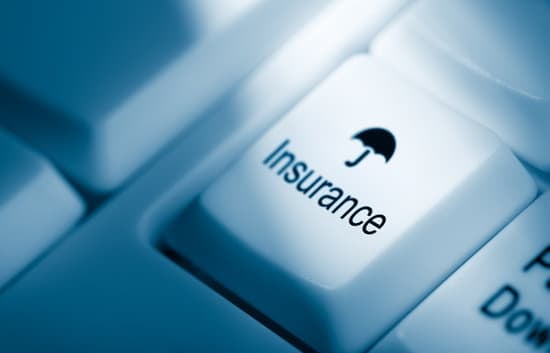What Happens If You Don’t Have Enough Liability Insurance?

Liability insurance is one of the essential pillars of auto insurance. Designed to protect you if you’re found at fault in an accident, it covers the costs of injuries, damages, and sometimes even legal fees associated with claims from the other party. But what happens if you don’t have enough liability insurance? While most states mandate minimum coverage requirements, these limits can be insufficient, especially if the accident involves significant damages or injuries.
In this article, we’ll explore the consequences of inadequate liability insurance. From out-of-pocket expenses to potential asset seizure, wage garnishment, and financial ruin, we’ll look at why carrying sufficient liability insurance is crucial and how to assess your coverage needs.
Understanding Liability Insurance and Its Components
Liability insurance has two main components:
- Bodily Injury Liability (BIL): This part covers medical expenses, lost wages, and even pain and suffering for others injured in an accident where you’re at fault.
- Property Damage Liability (PDL): This part covers the cost of repairs or replacement of the other party’s property, typically their vehicle, but may also include buildings, fences, or other property damaged in the accident.
Each component has policy limits that define the maximum amount your insurer will pay per incident, per person, and per accident.
What Happens When Your Liability Insurance Isn’t Enough?
If you are in an accident where damages exceed your policy limits, you are responsible for covering the remaining costs out of pocket. Here’s what could happen if you don’t have enough liability insurance:
1. Out-of-Pocket Expenses
- If you cause an accident and your liability insurance doesn’t fully cover the medical expenses, property damage, or other associated costs, you’ll have to pay the difference. For example, if you have $50,000 in bodily injury coverage and the other driver’s medical bills total $100,000, you’ll be responsible for the additional $50,000 out of pocket.
2. Lawsuits and Legal Consequences
- The injured party can file a lawsuit against you to recover damages not covered by your insurance. Legal costs, settlements, and judgments can add up quickly, putting your personal finances at risk.
- In many cases, a lawsuit can lead to a significant financial judgment against you, which might require you to pay substantial sums over time.
3. Potential Seizure of Assets
- If the judgment against you is large enough, the court may order a seizure of your assets to satisfy the debt. This could include your home, savings accounts, investment portfolios, or other valuable assets.
- Your state’s laws dictate which assets are protected in these scenarios, but assets like real estate or non-retirement investments may be vulnerable.
4. Wage Garnishment
- If you don’t have enough funds or assets to satisfy a judgment, the court can order a wage garnishment, which means a portion of your paycheck will be redirected to pay off the outstanding debt.
- Wage garnishment can last for years, significantly impacting your financial stability and reducing your disposable income.
5. Damage to Credit Score
- Failing to pay a court-ordered judgment or settling it late can negatively impact your credit score. A low credit score can make it challenging to secure loans, mortgages, or even certain job opportunities, as many employers check credit reports as part of their hiring process.
Why Minimum Liability Coverage May Not Be Enough
While state minimums provide basic protection, they often fall far short in serious accidents. Here’s why minimum coverage can leave you vulnerable:
- High Medical Costs
- Medical expenses for injuries in auto accidents can quickly exceed $50,000, especially if surgery, long-term rehabilitation, or emergency services are involved. Minimum coverage may not be enough to cover these expenses.
- Rising Vehicle Repair Costs
- With newer vehicle technology, repairs can be costly, sometimes totaling thousands of dollars for even minor collisions. Minimum coverage may not fully cover the other driver’s repair costs.
- Lawsuit Damages
- Beyond medical bills and property damage, accident victims may sue for lost income, emotional suffering, and long-term disability. Judgments for these can amount to hundreds of thousands of dollars, far exceeding most state minimums.
How Much Liability Insurance Should You Consider?
To protect yourself from the consequences of inadequate insurance, consider purchasing higher liability limits. Here are some recommendations:
1. Evaluate Your Assets
- If you own a home, car, or have substantial savings, consider liability limits that match or exceed your net worth. This will help protect your assets if you’re found at fault in a severe accident.
2. Think About Income and Future Earnings
- Higher earners are often targets for lawsuits, as injured parties may assume you can afford to pay substantial settlements. Consider your income and potential future earnings when choosing coverage.
3. Consider Umbrella Insurance
- Umbrella insurance is an extra layer of liability coverage that goes beyond your standard auto policy. It can help protect your assets and future earnings if you’re sued for damages that exceed your primary policy limits.
Types of Accidents Where Inadequate Liability Coverage Can Be Risky
Certain types of accidents pose higher risks for those with minimum liability coverage:
- Multi-Car Accidents
- In a chain-reaction accident, you may be liable for damages to multiple vehicles and injuries to several people, quickly exceeding your policy limits.
- Accidents Involving High-Value Vehicles
- If you’re responsible for damages to a high-end vehicle, repair costs can be steep, and your liability coverage may not be enough.
- Accidents with Serious Injuries
- Injuries like spinal cord damage, traumatic brain injuries, and multiple fractures can result in substantial medical bills and rehabilitation costs. These cases often involve lawsuits with high damages.
- Accidents Involving Pedestrians or Cyclists
- Pedestrian or cyclist injuries are often severe and costly to treat, leading to high medical expenses and potential legal action against the at-fault driver.
Additional Ways to Protect Yourself
To mitigate the risk of financial loss due to insufficient liability coverage, consider these strategies:
1. Increase Your Liability Limits
- Opting for higher limits, such as $100,000/$300,000/$100,000 (per person/per accident/property damage), provides a greater buffer in case of a severe accident.
2. Purchase Umbrella Insurance
- Umbrella insurance adds extra liability coverage, often in $1 million increments, to protect against catastrophic financial losses.
3. Review and Adjust Coverage Regularly
- As your assets grow, periodically reassess your insurance needs to ensure that your liability coverage remains sufficient.
4. Consider Bundling Insurance Policies
- Bundling auto, home, and umbrella insurance policies can often lead to discounts, helping you afford higher liability limits.
Real-Life Examples of Insufficient Liability Coverage
To illustrate the risks, here are some real-world scenarios where insufficient liability coverage led to financial hardship:
- Multi-Vehicle Collision: A driver with minimum liability coverage caused a five-car pileup. The damages, medical costs, and legal fees quickly exceeded their policy limit, leading to wage garnishment and asset seizure.
- Severe Injury Accident: After causing an accident that left a pedestrian with lifelong injuries, a driver with low liability limits faced a lawsuit for millions in damages. They ended up selling their home to cover the settlement.
- High-Value Vehicle Damage: A minor collision with a luxury car resulted in repair costs that exceeded the driver’s property damage liability limit. The driver paid thousands out of pocket to cover the balance.
Conclusion
Having enough liability insurance is essential to protect yourself financially from the unexpected. While state minimums might satisfy legal requirements, they often fall short when it comes to covering serious accidents. If your liability coverage is inadequate, you could face out-of-pocket expenses, lawsuits, asset seizure, wage garnishment, and credit damage.
Consider factors like your assets, income, and risk tolerance when choosing coverage limits, and don’t hesitate to opt for higher limits if you have valuable assets or a high income. Additionally, umbrella insurance can offer an extra layer of protection, giving you peace of mind that you’re covered in case of a major accident. By investing in adequate liability coverage, you protect your financial future and ensure that you’re prepared for whatever happens on the road.



